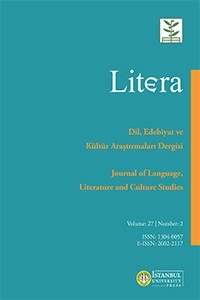Two Haitian Revolutionaries in the Plays of Aime Cesaire: Toussaint Louverture and Henri Christophe
Haiti, one of the old colonies of France, gained its freedom after long years of warfare against France and Spain. Black slaves fought for their own freedom, following their leader Toussaint Louverture and Henri Christophe who were important historical figures that played a key role to gain its independence in the early 1800s. Aimé Césaire, a Martinican playwright of the XXth century, wrote two different plays on these heroes: One of the plays, entitled And the dogs were silent (1958), tells us the life of Toussaint Louverture, called in this play as “The Rebel”, who shows us the system of the colonization of the New World, and the fight of the slaves against their masters. The second play, entitled The Tragedy of King Christophe (1963), presents Henri Christophe, who was the King of Haiti. He fought in the name of his people against the colonizers as well. By analyzing these two figures of the history of Haiti, we will observe the two plays of Aimé Césaire, entitled And the Dogs were silent and The Tragedy of King Christophe, in which we can see the battle of the two Haitian protagonists. We will examine these characters and these plays by referring to the concept of “tragedy” of Aristotle. Within the scope of Aristotle, the relationship between tragedy and history will guide this study by taking into consideration the historical base of these two plays. In this study, we will refer to the Memoirs of General Toussaint-Louverture, written by himself, a posthumous work that emphasizes the fight against the colonizers, and to Lamartine’s play Toussaint Louverture.
Keywords:
Aimé Césaire, Toussaint Louverture, Henri Christophe, francophone theatre Haitian revolution,
___
- Aime Cesaire Pour Aujourd’hui Et Pour Demain. (1995). Editeur : Guy Ossito Midiohouan. France : Sepia.
- Aristote. (1829). Poétique. (trad. Abbé Batteux). Paris : De l’Imprimerie Auguste Delalain.
- Bérenger, J. (10/1997). « La rivalité franco-anglaise en Amérique du Nord de 1689 à 1783 », Revue d’histoire maritime-La Percée de l’Europe sur les Océans 1690 vers 1790, numéro 1, numéro spécial, pp. 53-100.
- Blancpain, F. (2016). Histoire de Saint Domingue Haïti. Matoury Guyane: Ibis Rouge Editions.
- Césaire, A. (2004). Discours sur le colonialisme, suivi de Discours sur la Négritude. Paris: Présence Africaine.
- Césaire, A. (1956). Et les chiens se taisaient. Paris: Présence Africaine.
- Césaire, A. (1970). La Tragédie du Roi Christophe. Paris: Présence Africaine. Déclaration des Droits de l’Homme et du Citoyen de 1789 Article I: http://www.assemblee-nationale.fr/ connaissance/constitution.asp#declaration consulté le 27.01.2020.
- Dorigny, M. &Guinot B. (2013). Atlas des Esclavages, De l’Antiquité à Nos Jours. Paris: Editions Autrement.
- Etensel Ildem, A. (2019). « Aller Simple: Après le voyage dans les cales le retour en Afrique est-il possible? » Frankofoni. Ankara. pp.139-144.
- Franco, J.L. (1999). La Traite Négrière du XV au XIXe siècle. La traite des esclaves dans les Caraïbes et en Amérique Latine. pp.98-110. Paris. France: Unesco.
- Gil, A. « La représentation en profondeur de Et les chiens se taisaient d’Aimé Césaire » pour une édition génétique en ligne. Genesis [En ligne], 33 | 2011, mis en ligne le 23 octobre 2013. consulté le 27 janvier 2020. URL : http://journals.openedition.org/genesis/605 ; DOI : 10.4000/genesis.605.
- Lamartine, A. (1850). Toussaint Louverture. Paris : Michel Levy Frères, Libraires-Editeurs.
- Louverture, T. (1853).Mémoires du général Toussaint-Louverture, écrits par lui-même. Paris: Pagnerre, LibraireEditeur.
- Morss, S. (2009). Hegel, Haiti and Universal History. Pittsburg: University of Pittsburgh Press.
- Pageaux, D. (1984). Images et Mythes d’Haïti, Paris: Editions l’Harmattan.
- Raynal, G. (1780). Histoire philosophique et politique des établissements et du commerce des Européens dans les deux Indes Tome III. Genève: chez Jean-Leonard Pellet, imprimeur de la Ville & de l’Académie Genève.
- Başlangıç: 1954
- Yayıncı: İstanbul Üniversitesi
